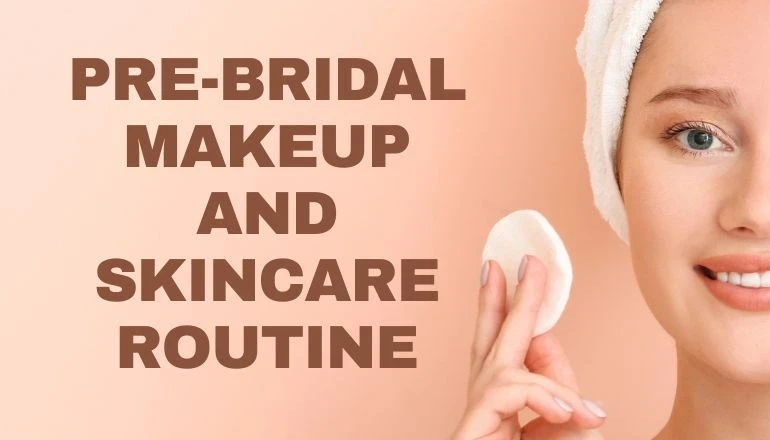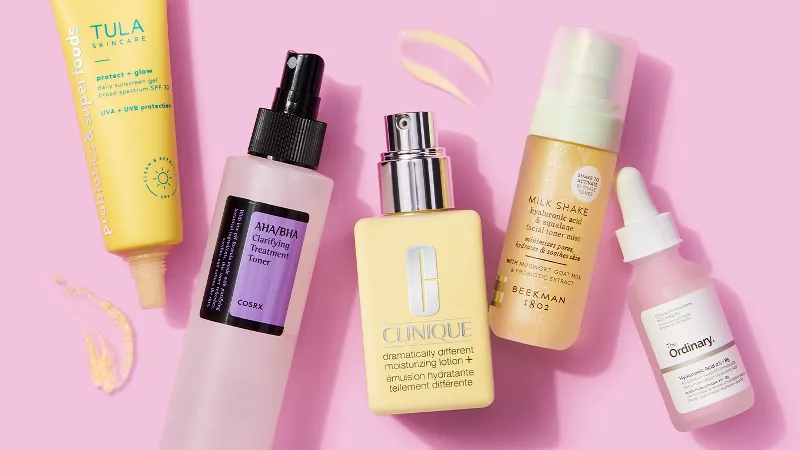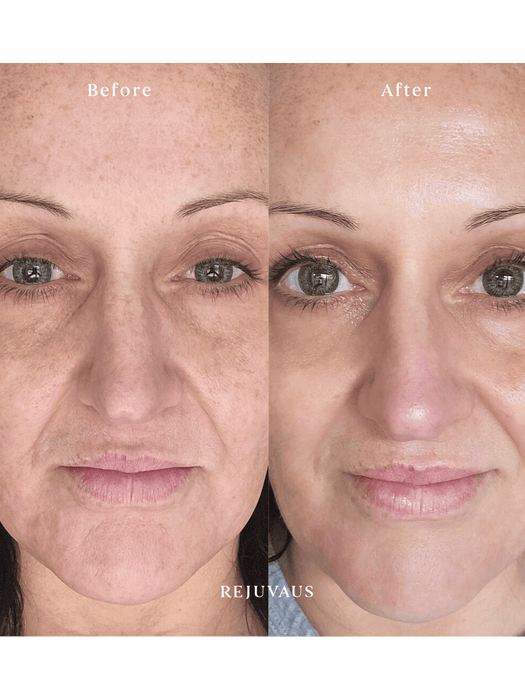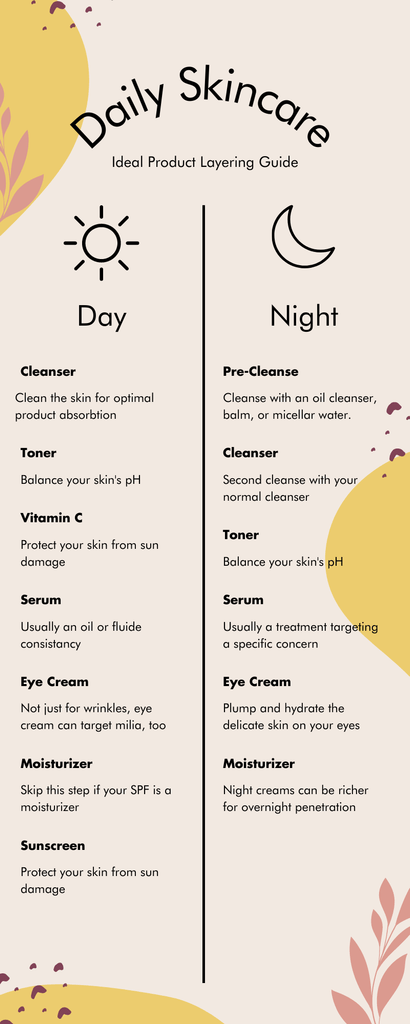Your makeup can only look its best if your skin is ready for it. Imagine applying foundation on smooth, hydrated skin versus dry, dull skin—the difference is striking.
A good skincare routine before makeup not only makes your look flawless but also protects your skin throughout the day. If you want your makeup to last longer and your skin to stay healthy, you need to start with the right steps.
Keep reading to discover simple, effective tips that will transform your makeup game from the very first step.

Credit: www.youtube.com
Cleanse Thoroughly
Starting your makeup routine with a clean face is crucial. It ensures your skin is free from dirt, oil, and impurities that can clog pores and cause breakouts. Cleansing thoroughly creates a smooth base for makeup, helping it last longer and look flawless.
Choose The Right Cleanser
Your skin type should guide your cleanser choice. If you have oily skin, a foaming or gel cleanser can help remove excess oil without stripping moisture. For dry or sensitive skin, a cream or hydrating cleanser keeps your skin balanced and calm.
Think about your daily environment too. If you spend a lot of time outdoors, you might need a cleanser that removes pollution and sunscreen effectively. Have you ever felt your makeup slide off midday? Your cleanser choice might be the reason.
Double Cleansing Method
Double cleansing involves two steps to ensure your skin is spotless. First, use an oil-based cleanser to dissolve makeup, sunscreen, and excess sebum. This step breaks down what your regular cleanser might miss.
Next, follow with a water-based cleanser to remove sweat, dirt, and leftover residue. This method feels like a reset button for your skin, making it truly clean without over-drying. Have you tried double cleansing? Many notice their skin feels fresher and makeup applies more evenly after.
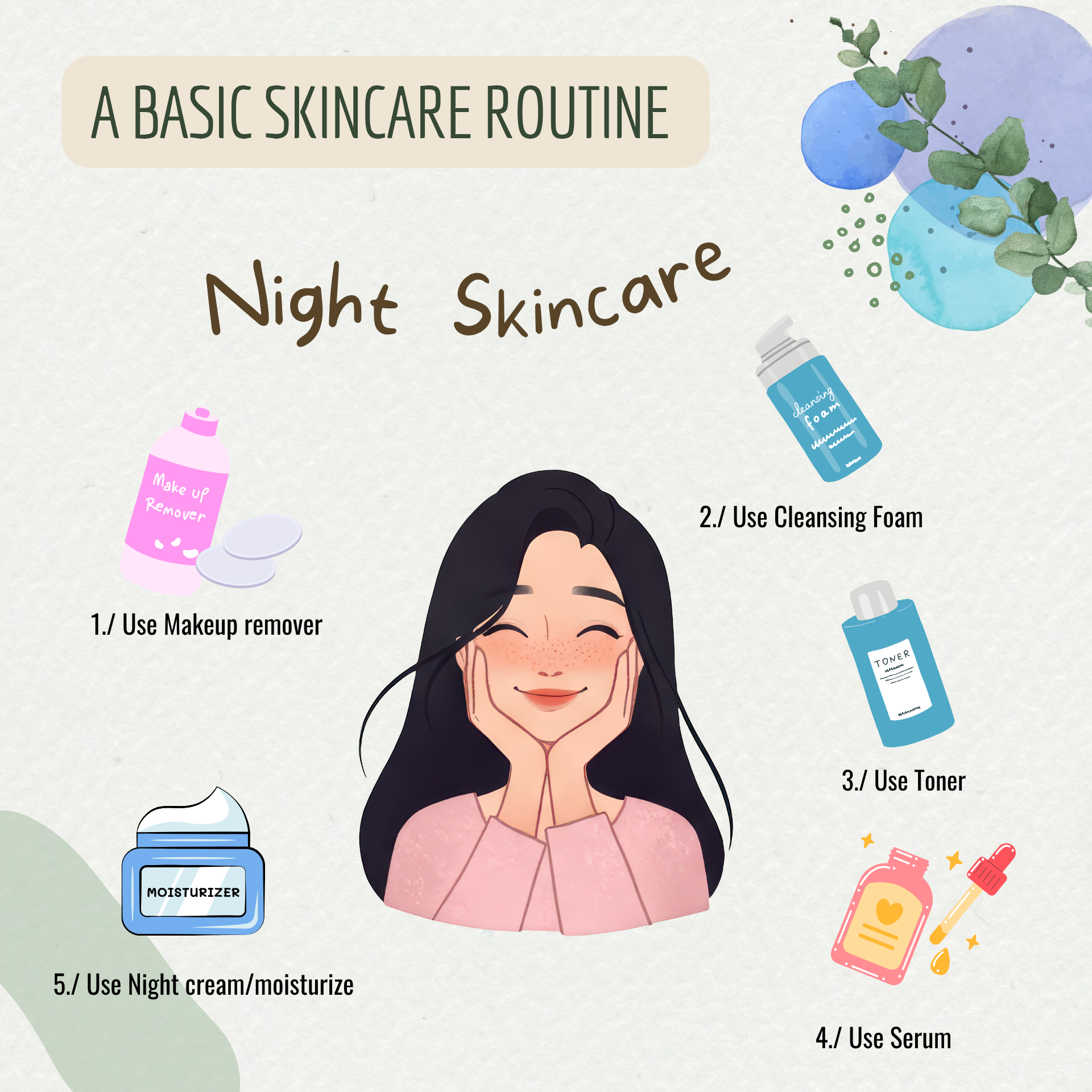
Credit: timicosmetics.com
Exfoliate Gently
Exfoliating gently is a crucial step before applying makeup. It removes dead skin cells that can cause your foundation to look patchy or cakey. But over-exfoliating or using harsh products can irritate your skin and spoil your fresh look.
Physical Vs Chemical Exfoliants
Physical exfoliants use tiny particles or tools to scrub off dead skin. They give an immediate smooth feel but can sometimes be too rough, especially if you have sensitive skin.
Chemical exfoliants, on the other hand, use acids like AHAs or BHAs to dissolve dead skin cells. They work gently and gradually, improving skin texture over time without the scrubbing.
Think about your skin’s reaction. Does scrubbing leave it red or irritated? Then chemical exfoliants might be a better choice. If your skin handles scrubs well, physical exfoliants can give quick results.
Frequency For Different Skin Types
How often you exfoliate depends on your skin type:
- Oily or acne-prone skin:2-3 times a week to prevent clogged pores.
- Dry or sensitive skin:Once a week or even less to avoid irritation.
- Normal or combination skin:1-2 times weekly to maintain smoothness.
Pay attention to how your skin feels after exfoliating. Does it feel tight or sore? That’s a sign to reduce frequency or switch to a gentler product.
Have you noticed your makeup sitting better after exfoliating? Try adjusting your exfoliation routine and see the difference in your skin’s texture and makeup finish.
Tone And Balance
Toning is a key step before applying makeup. It refreshes the skin and restores its natural pH level. Proper tone helps your makeup last longer and look smoother. It also prepares the skin to absorb moisturizers and serums better.
Benefits Of Toning
Toning removes leftover dirt and oil after cleansing. It tightens pores for a clearer complexion. Toning adds a layer of hydration, preventing dry patches. It balances skin’s oil production, reducing shine. A good toner soothes irritation and calms redness. This step creates a fresh, clean canvas for makeup.
Selecting Alcohol-free Toners
Alcohol-free toners are gentle and safe for all skin types. They avoid drying out the skin or causing tightness. These toners often contain soothing ingredients like aloe vera or chamomile. They help maintain moisture while balancing the skin. Choose a toner suited to your skin’s needs for best results. Avoid harsh chemicals that can irritate or damage skin.
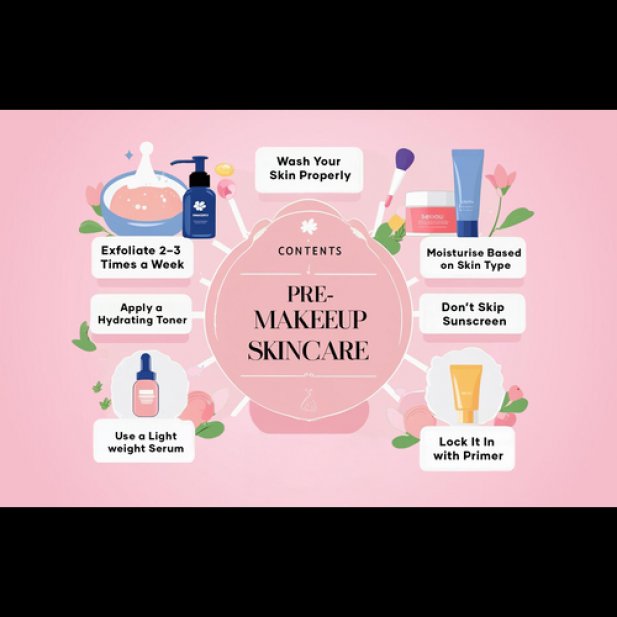
Credit: www.articleted.com
Hydrate Deeply
Hydrating your skin deeply before applying makeup is not just a step—it’s the foundation of a flawless look. Without proper hydration, makeup can cling to dry patches or look cakey, no matter how skillfully you apply it. Have you ever noticed your foundation cracking or your concealer settling into fine lines? That’s often a sign your skin needs a hydration boost.
Serums For Targeted Care
Serums deliver concentrated ingredients that address specific skin concerns while providing intense hydration. Look for serums with hyaluronic acid, which can hold up to 1000 times its weight in water. This means your skin stays plump and moisturized throughout the day.
Other powerful options include vitamin C serums, which brighten dull skin and improve texture. If you struggle with redness or irritation, a calming serum with niacinamide can soothe and hydrate at the same time. Applying a serum right after cleansing allows your skin to absorb these active ingredients deeply.
Moisturizers For All Skin Types
Choosing the right moisturizer depends on your skin type, but the goal remains the same: lock in hydration and create a smooth base for makeup. If your skin is oily, opt for a lightweight, gel-based moisturizer that hydrates without clogging pores.
Dry skin benefits from richer creams packed with nourishing oils and emollients. Combination skin often requires a balanced formula that hydrates dry areas but controls shine in oily zones. Don’t underestimate the power of a moisturizer with SPF—it protects your skin while prepping it for makeup.
Think about your current moisturizer—does it keep your skin comfortable all day? If not, it might be time to experiment with formulas that hydrate deeper and work better under makeup.
Protect With Spf
Applying sunscreen is a key step before makeup. It protects your skin from harmful UV rays. Sunscreen helps prevent sunburn, premature aging, and skin damage. Choosing and applying the right SPF ensures your skin stays healthy all day. Make SPF protection a daily habit, even if you stay indoors.
Choosing The Right Sunscreen
Select a sunscreen with broad-spectrum protection. It blocks both UVA and UVB rays. Look for SPF 30 or higher for daily use. Choose formulas labeled “non-comedogenic” to avoid clogging pores. If you have sensitive skin, pick sunscreens with physical blockers like zinc oxide. Lightweight, gel-based sunscreens work well under makeup. Water-resistant options help if you sweat or stay outdoors.
Application Tips For Maximum Protection
Apply sunscreen on clean, dry skin before any other product. Use about a nickel-sized amount for your face. Don’t forget ears, neck, and hairline. Wait 15 minutes before applying makeup. This allows the sunscreen to absorb fully. Reapply every two hours if you stay outside. Use a makeup setting spray with SPF for extra protection. Gently pat sunscreen into the skin to avoid wiping it away.
Prime For Makeup
Priming your skin before applying makeup is a game-changer. It creates a smooth canvas that helps your makeup stay put and look fresh longer. If you’ve ever noticed your foundation sliding off or fading too quickly, primer could be the missing step in your routine.
Benefits Of Using A Primer
Primer smooths out your skin’s texture by filling in fine lines and pores. This makes your foundation glide on easily and look more even. It also acts as a barrier between your skin and makeup, which can help prevent clogged pores and breakouts.
Many primers control oil and shine, keeping your face matte throughout the day. Some even add hydration, so your skin doesn’t feel tight or dry under makeup. Have you ever wondered why your makeup looks cakey by midday? Primer often solves that problem by improving makeup grip.
Types Of Primers And Their Uses
| Primer Type | Main Benefit | Best For |
|---|---|---|
| Mattifying Primer | Controls oil and shine | Oily or combination skin |
| Hydrating Primer | Adds moisture and plumps skin | Dry or dull skin |
| Color Correcting Primer | Neutralizes redness or sallowness | Uneven skin tone |
| Illuminating Primer | Gives a radiant glow | Dull or tired-looking skin |
| Silicone-Based Primer | Creates a smooth, velvety finish | All skin types, especially uneven texture |
Choosing the right primer depends on your skin’s needs and the look you want. If your skin tends to get oily, a mattifying primer will help keep shine away. On dry days, I always reach for a hydrating primer because it stops my foundation from flaking.
What issues do you face with your makeup? Spotting the right primer can solve those problems and improve your overall makeup experience. You might find that this one step transforms how your makeup looks and feels all day long.
Additional Tips
Adding a few extra touches to your skincare routine before makeup can make a big difference in how your makeup looks and feels throughout the day. These additional tips help protect delicate areas and keep your skin fresh, ensuring your makeup stays flawless longer. Let’s dive into some simple yet effective steps you can take.
Lip And Eye Care
Your lips and eyes are often the most sensitive parts of your face. Applying a nourishing lip balm before makeup prevents dryness and flaking, which can ruin the smooth finish of lipstick. Choose a balm that absorbs quickly so it doesn’t interfere with your lip color.
For your eyes, gentle moisturizing is key. Use a lightweight eye cream to reduce puffiness and hydrate the skin without making it greasy. This helps your concealer apply more smoothly and prevents creasing.
Have you noticed how flaky lips or dry under-eyes can make even the best makeup look patchy? Taking these small steps can solve that problem instantly.
Hydrating Mists And Setting Sprays
Hydrating mists are great for refreshing your skin before makeup application. A quick spritz can add a boost of moisture and calm any redness or irritation. Look for mists with soothing ingredients like aloe vera or rose water.
After your makeup is done, a setting spray locks everything in place and adds a final layer of hydration. This prevents your makeup from looking cakey or settling into fine lines. Plus, it gives a natural, dewy finish that many powders can’t achieve.
Next time you get ready, try including a hydrating mist before makeup and a setting spray after. Notice how your makeup feels lighter and lasts longer without needing touch-ups.
Frequently Asked Questions
What Is The Best Skincare Routine Before Makeup?
Start with cleansing to remove dirt and oil. Apply toner to balance skin pH. Use a lightweight moisturizer to hydrate. Finish with a primer to create a smooth base for makeup.
How Long Should I Wait After Skincare Before Makeup?
Wait about 5 to 10 minutes for skincare products to fully absorb. This prevents makeup from sliding off or looking cakey. It ensures better makeup longevity and smooth application.
Can I Skip Moisturizer Before Applying Makeup?
No, moisturizing is essential. It hydrates skin and creates a smooth canvas. Skipping moisturizer may cause makeup to cling to dry patches and look uneven.
Should I Use Sunscreen In My Skincare Routine Before Makeup?
Yes, always apply sunscreen daily. It protects skin from harmful UV rays. Use a broad-spectrum SPF 30 or higher under your makeup for sun protection.
Conclusion
Achieving a flawless makeup look starts with great skincare. Cleanse your face gently. This removes dirt and oil. Next, apply a hydrating moisturizer. This preps your skin for makeup. Don’t forget sunscreen. It protects your skin from damage. A primer can help smooth your skin’s surface.
Your makeup will last longer. Follow these simple steps for a radiant look. Your skin will thank you. Remember, healthy skin is beautiful skin. Stay consistent with your routine. Enjoy the benefits of a fresh, glowing complexion. Keep your skin happy and healthy every day.
